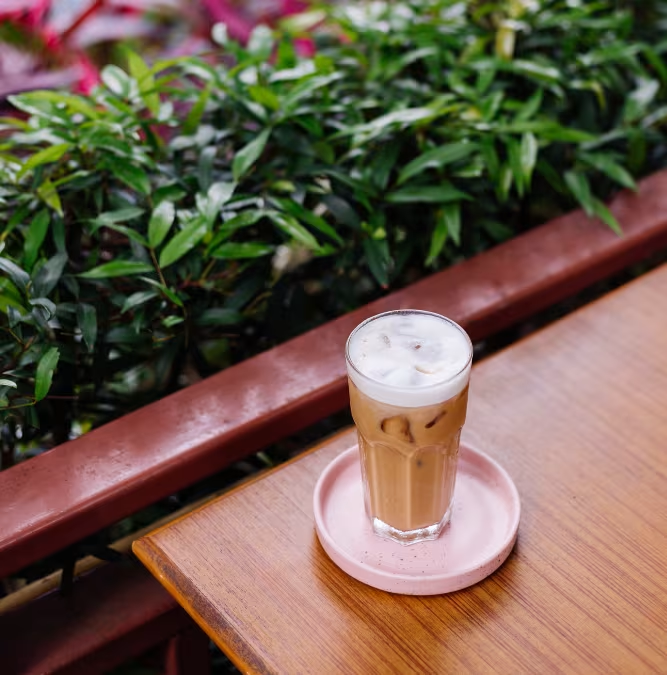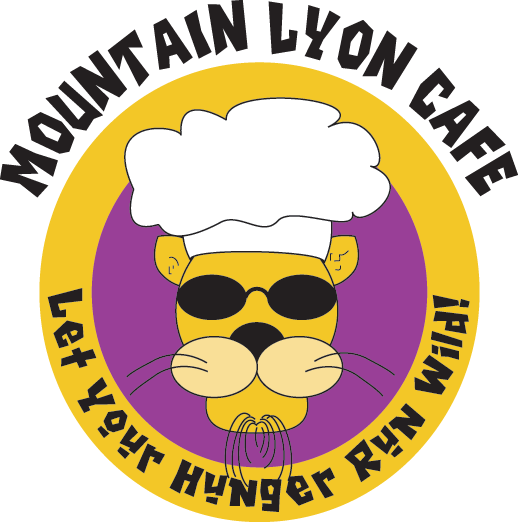Discover why Vietnam’s coffee scene is booming, with bold Robusta beans, rich iced coffee, and a culture that’s rewriting the rules of cold caffeine!
Coffee in Vietnam: Where Cold Coffee and Robusta Rule!
Vietnam doesn’t just drink coffee — it lives it. On nearly every corner from Hanoi’s ancient alleyways to Ho Chi Minh City’s bustling boulevards, you’ll find plastic stools, phin filters dripping into glasses, and the unmistakable aroma of Robusta beans that power one of the most unique coffee cultures in the world. As the world’s second-largest coffee exporter, Vietnam’s influence reaches beyond numbers — it is a cultural icon that redefines how we think about cold coffee, caffeine, and the ritual of brewing.
“Coffee is not just a beverage in Vietnam. It’s a conversation, a memory, a pause in life.” — Lyoncafe Team
Why Vietnamese Coffee Culture Stands Out
A Brief History of Coffee in Vietnam
Coffee first came to Vietnam in 1857, introduced by French colonists who planted Arabica trees in northern regions like Ninh Bình. But it wasn’t until the 20th century, particularly during the post-war Doi Moi reforms of the 1980s, that Vietnam truly unlocked its coffee destiny. The Central Highlands — Buôn Ma Thuột, Lâm Đồng, and Đắk Lắk — became the country’s coffee epicenter, where Robusta flourished due to its resistance to pests and adaptation to tropical conditions.
| Year | Event |
|---|---|
| 1857 | French colonists introduce coffee to Vietnam |
| 1986 | Economic reforms accelerate agricultural exports |
| 1990s–Today | Vietnam becomes world’s #2 coffee exporter |
Today, over 90% of Vietnam’s coffee is Robusta, making it not just an economic pillar but a symbol of bold, no-nonsense energy.
Coffee as a Social Experience in Vietnamese Life
Vietnamese coffee isn’t meant to be rushed. The iconic phin drip filter allows the brew to flow slowly, drop by drop, encouraging people to pause — something that contrasts starkly with the fast-paced “to-go” coffee culture in the West.
From early-morning gatherings to late-night contemplations, cafés in Vietnam serve as:
Study spaces for students
Boardrooms for entrepreneurs
Hangouts for artists and lovers
Observatories for old men sipping slowly and watching the world pass by
“You don’t go to a Vietnamese café to just drink coffee. You go there to live your story.”
Robusta Reigns Supreme: Vietnam’s Favorite Bean
What Makes Robusta Coffee Unique?
Globally overshadowed by Arabica in luxury markets, Robusta beans shine in Vietnam. They are:
Stronger in caffeine (2.2–2.7%) than Arabica (1.2–1.5%)
Bolder and more bitter, with earthy, chocolatey undertones
Naturally resilient, growing at lower altitudes and more resistant to disease
Ideal for iced coffee, as they retain strength even when diluted
“Robusta is like the soul of Vietnamese people: tough, bold, unpretentious.” — Nguyễn Thị Vân, local coffee roaster
The taste may not be for everyone, but when paired with sweetened condensed milk, magic happens. That’s cà phê sữa đá, arguably the drink that defines a nation.
See more: Where to Find the Best Coffee in the World
Robusta Farming in Vietnam: Scale, Climate, and Taste
Vietnam’s dominance in the global Robusta market isn’t accidental. It’s the result of:
Favorable climate: Highland altitudes of 500–1,200 meters
Distinct dry/wet seasons: Perfect for bean maturation
Smallholder cooperatives: 95% of farms are family-owned
Efficient cultivation: Robusta plants yield 2–3 times more than Arabica
| Region | Specialty |
|---|---|
| Đắk Lắk | Full-bodied Robusta |
| Lâm Đồng | Experimental Arabica-Robusta blends |
| Gia Lai | Dark, bitter beans for strong brews |
Vietnamese farmers have refined the dry-processing method, producing beans with less acidity — perfect for local preferences and increasingly popular in specialty Robusta markets abroad.
Cold Coffee Obsession: Cà Phê Sữa Đá and More
How Vietnamese Iced Coffee Is Made

If Italy has espresso and Sweden has fika, Vietnam owns the iced coffee experience. Here’s how a classic cà phê sữa đá is brewed:
Coarsely ground Robusta beans placed in a phin filter
Hot water poured over the grounds, allowed to drip slowly
Strong coffee collected over a base of sweetened condensed milk
Stirred, then poured over a tall glass of ice
The result? A rich, creamy, sweet, and bitter bomb that wakes your senses and cools your soul.
Local Variations: Hanoi vs. Ho Chi Minh City
Vietnam’s coffee isn’t monolithic. Regional styles add flair and identity.
Hanoi: Try cà phê trứng (egg coffee), a luscious blend of whipped egg yolk, sugar, and coffee invented in 1946 by Nguyễn Văn Giảng
Ho Chi Minh City: Intense and sweeter coffees, coconut milk lattes, and modern cold brews dominate hipster cafés like The Workshop or Thinker & Dreamer
“In Hanoi, coffee is poetry. In Saigon, it’s a revolution.”
Street Cafés, Sidewalk Stools, and Serious Brews
What Makes Vietnam’s Street Coffee Scene So Special?
The best coffee in Vietnam often comes not from shiny machines but from roadside vendors, with:
Old-school metal phin filters
Tiny plastic stools and wooden trays
Conversations that start over one cup and end hours later
This grassroots culture makes coffee deeply affordable, democratic, and accessible. No Wi-Fi passwords, no rules — just flavor and connection.
| City | Average Iced Coffee Price (USD) |
|---|---|
| Ho Chi Minh | $0.80–$1.20 |
| Hanoi | $1.00–$1.50 |
| Da Nang | $0.70–$1.10 |
“On any given morning, you’ll see CEOs, students, and retirees all sipping the same glass. That’s the Vietnamese coffee equality.”
Iconic Coffee Spots to Visit in Vietnam
If you’re a coffee pilgrim, don’t miss:
The Note Coffee (Hanoi): Walls lined with thousands of Post-its from global visitors
Cộng Cà Phê (Nationwide): Military-chic design meets bold Robusta
Trung Nguyên Legend (Buôn Ma Thuột & major cities): Vietnam’s biggest coffee brand with a mission to “Awaken the Mind”
Each café tells a story — sometimes in flavor, sometimes in philosophy.
Arabica vs. Robusta: A Coffee Comparison from Vietnam’s Lens
When it comes to understanding Vietnam’s coffee identity, it’s essential to explore the contrast between Arabica and Robusta, not as a rivalry, but as a complementary narrative shaped by climate, culture, and customer taste. Arabica, often considered the refined aristocrat of the coffee world, finds limited but growing space in Vietnam’s cooler highlands, such as Cầu Đất in Đà Lạt, where experimentation is birthing a new wave of boutique Arabica producers. Meanwhile, Robusta dominates the fields, cups, and hearts of everyday Vietnamese coffee drinkers.
Taste Profiles and Brewing Methods
Let’s break down the flavor, caffeine, and brewing differences clearly:
| Attribute | Arabica (Vietnam) | Robusta (Vietnam) |
|---|---|---|
| Flavor | Fruity, floral, sometimes acidic | Earthy, bitter, nutty, chocolate-like |
| Caffeine content | 1.2–1.5% | 2.2–2.7% |
| Acidity | Higher | Lower |
| Preferred brewing | Espresso, pour-over, filter | Phin filter, cold brew, instant coffee |
| Price point | Premium, export-oriented | Affordable, domestic & export bulk |
Arabica lovers in Vietnam are often those seeking novelty or global flavor standards, but the majority remain loyal to Robusta’s robust personality — especially in iced or sweetened formats that benefit from its powerful taste and low acidity.
Why Robusta Is Perfect for Cold Coffee
There’s a practical reason why Vietnam’s favorite beans are ideal for its favorite beverage: Robusta handles dilution exceptionally well. Unlike Arabica, which can become bland or acidic when poured over ice, Robusta maintains its strong backbone. The natural oils in Robusta enhance body and flavor, even in cold drinks. Add condensed milk or coconut cream, and it becomes the signature taste of tropical refreshment.
This has led to innovation in the Vietnamese cold brew scene, where roasters like Lyoncafe (learn more at mtnlyoncafe.com) are pioneering flash-brewed and nitro Robusta blends that are export-ready and climate-resilient, ensuring Vietnam’s place in the global future of coffee.
Beyond Borders: Vietnamese Coffee’s Global Rise
Vietnam’s influence no longer ends at its borders. The nation has quietly become a coffee giant, exporting its beans and brews worldwide.
Export Stats: How Vietnam Became the World’s #2 Coffee Exporter
Vietnam is currently the second-largest coffee exporter in the world, right after Brazil. According to the International Coffee Organization (ICO):
Vietnam exported over 1.7 million tons of coffee in the last fiscal year
Over 90% is Robusta, mostly shipped to Germany, Italy, the USA, and Japan
Major global brands (like Nestlé and Lavazza) rely on Vietnamese beans for blends and instant coffee
This export boom was driven by infrastructure investment, government support, and the resilience of smallholder farmers, often working just 1–3 hectares of land.
Vietnamese Coffee Shops Abroad
In parallel with bean exports, Vietnamese cafés have also gone global:
Phin Coffee House (Berlin): Offers traditional phin-filter brews with modern twists
Cà Phê Roasters (Philadelphia): Specializes in cold brew made with Vietnamese beans
Hello 5 (California): Brings the soul of Saigon to sunny Orange County
Nguyen Coffee Supply (New York): Founded by Sahra Nguyen, this brand advocates for specialty Robusta and Vietnamese farmer equity
These cafés are not just trendsetters — they are cultural ambassadors, shifting global perceptions of Vietnamese coffee from cheap and instant to craft and conscious.
Sustainable Practices in Vietnamese Coffee Farming
In recent years, Vietnamese farmers, roasters, and policy makers have taken major steps toward sustainability and climate resilience. This is not just an environmental mission — it’s an economic imperative, as climate change threatens yields and quality.
Climate Challenges and Organic Movements
Vietnam faces:
Rising temperatures and shifting rainfall patterns
Soil erosion and pesticide overuse
Market pressures to “go green” for European and Japanese buyers
The response includes:
Agroforestry systems: Growing coffee under shade trees to conserve biodiversity
Water-saving irrigation: New drip systems in drought-prone areas like Gia Lai
Organic certifications: From Rainforest Alliance to UTZ, with increasing farmer participation
Organizations like Lyoncafe Cooperative Network now train farmers in organic transition, helping them increase both sustainability and value.
Local Innovations and Coffee Cooperatives
The cooperative model is central to this transformation:
Farmers pool resources to access tech and markets
Share processing equipment, drying beds, and packaging systems
Collaborate with exporters and roasters to maintain quality control
In Đắk Nông, the Future Robusta Program (established 2021) provides education, soil testing, and fair trade certification assistance. These are the kinds of efforts that will keep Vietnamese coffee competitive in a more ethically driven global market.
Final Sip: Why Cold Robusta Coffee Represents the Soul of Vietnam
From its rural roots to its urban coolness, Vietnamese coffee is more than a beverage — it’s an embodiment of resilience, creativity, and hospitality. Whether it’s a slow drip phin over ice or a creamy egg coffee in a vintage café, each cup tells a story of people, place, and pride.

I’m Kara Chavez, and I love coffee. I like to create some of the best coffees around – espressos, lattes, macchiatos . I strive for perfection in my coffee-making skills, and I take great pride in providing a delicious cup of joe to my customers.
I’ve been working in the coffee industry for years now, and I know everything there is to know about making a perfect cup of coffee. My passion for coffee shines through in every cup that I make, and I hope that you’ll stop by soon so that I can share my love of coffee with you!

